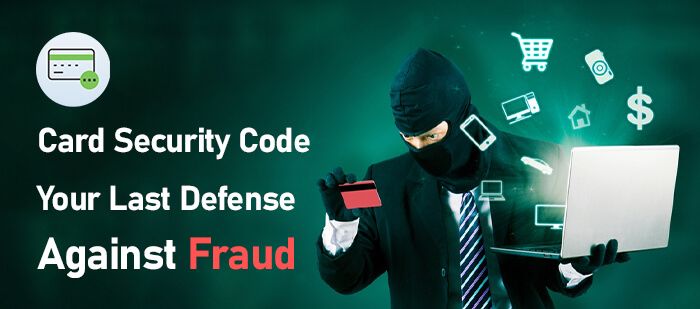
In today’s world, credit and debit cards have become the preferred method of payment for most transactions. From online shopping to in-store purchases, we rely heavily on these cards to make our lives more convenient. However, with the increase in card usage, the risk of fraud has also risen. This is where the Card Security Code comes into play.
Also known as CVV, CVC, or CID, this three or four-digit number provides an additional layer of protection against fraudulent activities. It may seem like a small detail, but the Card Security Code is your last line of defense in the battle against fraudsters. In this blog post, we’ll dive into what the Card Security Code is, how it works, and why it’s crucial in keeping your card and personal information safe.
Understanding the Card Security Code
The Card Security Code (CSC) is a vital feature on your credit or debit card designed to enhance security during transactions, especially those that don’t require the physical card, like online purchases. Typically found on the back of your card (or the front for American Express cards), this unique code is usually a three or four-digit number.
Unlike your card number, the CSC is not embossed or printed in raised letters, making it harder for fraudsters to capture through skimming devices or unauthorized digital copying. Its primary purpose is to verify that the cardholder has the physical card in their possession during the transaction. Merchants are required to request the CSC but are prohibited from storing it. This means each time you initiate a transaction, you’ll need to provide the CSC, adding an extra step of verification.
It’s important to note, the CSC goes by various names depending on the card issuer: CVV2 (Card Verification Value 2) for Visa, CVC2 (Card Verification Code 2) for MasterCard, and CID (Card Identification Number) for American Express. Understanding this critical feature of your card is the first step toward safeguarding your financial information from unauthorized access and potential fraud.
Some Related Blogs
- Chargeback Blacklist: A Comprehensive Guide
- Single Chargeback Cost: A Comprehensive Guide
- Understanding Hotel Chargebacks: An Essential Guide
- How to Successfully Navigate a Debit Card Chargeback
The Role of CSC in Preventing Fraud
The Card Security Code (CSC) serves a pivotal role in the defense against fraudulent transactions, particularly in the realm of online and phone-based purchases where the physical card is not presented. By requiring the CSC for transactions, merchants add an essential hurdle for fraudsters attempting to use stolen card information. Since the CSC is not stored or retained by merchants after the transaction, it’s significantly more challenging for unauthorized individuals to obtain this information through hacking or data breaches.
This security measure ensures that even if a thief manages to acquire your card number and expiration date, without the CSC, the stolen details are far less useful for conducting online fraud. Moreover, the necessity to input the CSC encourages cardholders to be more mindful of who they share their card details with, fostering a culture of security awareness. As online shopping continues to grow, the CSC’s role in preventing fraud becomes increasingly crucial, acting as a straightforward yet effective barrier against the exploitation of stolen card information in the digital space.
How to Keep Your Card Security Code Safe
Protecting your Card Security Code (CSC) is an essential aspect of safeguarding your financial information from potential fraudsters. Here are practical steps to ensure the safety of your CSC: Firstly, never share your card details, especially the CSC, over the phone or via email with unverified sources. Phishing attempts often masquerade as legitimate requests from banks or trusted organizations but aim to capture sensitive information. Secondly, be cautious about where and how you use your card online. Use your card only on secure websites (look for HTTPS in the web address and a padlock symbol) and consider utilizing a dedicated online shopping card with a limited credit line.
![]()
Email us anytime!
Email customer service 24/7
![]()
Call us anytime!
Reach customer care 24/7 at +1 (888) 901-8653
,p> Additionally, employing virtual card numbers for online transactions can provide an extra layer of security, as these are temporary numbers that mask your actual card details. Finally, regularly monitor your bank statements and transaction history for any unauthorized charges. Promptly reporting any suspicious activity to your bank can prevent further unauthorized transactions and potentially reverse fraudulent charges. By taking these proactive steps, you can significantly reduce the risk of CSC compromise and maintain the integrity of your financial data.
What to Do If Your CSC Is Compromised
If you suspect or discover that your Card Security Code (CSC) has been compromised, immediate action is critical to protect your financial assets. First, contact your card issuer without delay to report the suspicion or the incident. Most banks and credit card companies have 24/7 customer service lines specifically for reporting fraud and can take swift action to freeze your account, preventing any further unauthorized transactions.
Your card issuer will likely issue a new card with a new number and CSC to safeguard against further fraudulent activities. Additionally, it’s advisable to change your passwords and security questions for any online accounts associated with your compromised card to reinforce your security perimeter. Consider setting up transaction alerts if you haven’t already; this enables you to receive real-time notifications of any card activity, allowing for immediate detection of any unauthorized transactions.
Lastly, keep an eye on your credit reports in the following months to ensure no fraudulent activities go undetected. Taking these steps promptly can minimize the damage and help in the recovery process if your CSC falls into the wrong hands.
Future of Card Security and CSC
As we move further into the digital age, the future of card security, including the Card Security Code (CSC), is poised for innovative advancements. With the rise of sophisticated cyber threats, financial institutions and payment networks are exploring new technologies to enhance the security of card transactions.
Biometric verification, such as fingerprint and facial recognition, is becoming increasingly integrated into payment processes, offering a personalized layer of security beyond what numbers alone can provide. Additionally, the concept of dynamic CSCs, which change periodically, is gaining traction. This approach would render stolen card information obsolete much quicker, drastically reducing the window for fraudulent use. Blockchain technology is also being examined for its potential to secure transaction data in a decentralized and tamper-proof manner.
While the CSC plays a crucial role in today’s transaction security, its integration with these emerging technologies could redefine its effectiveness, making card payments even more secure in the future. As we navigate these advancements, staying informed and adapting to new security measures will be key in protecting our financial information against evolving threats.


